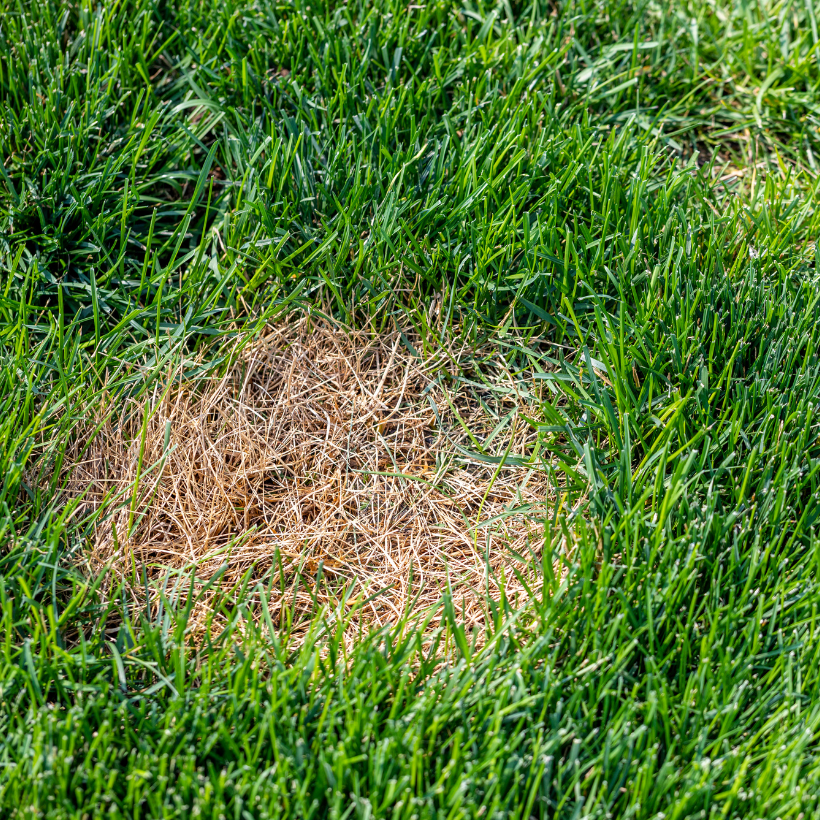
A lush and green lawn is the perfect complement to any home. However, lawn fungus is a common problem that can damage the appearance of your lawn and reduce its overall health. Lawn fungus can spread quickly and easily, especially in humid climates. Do You Have Fungus Growing in Your Lawn? Here, we’ll answer some common questions about lawn fungus, including what it is, what causes it, and how to prevent it.
What is Lawn Fungus?
Lawn fungus is a plant disease caused by fungal spores. These spores enter the grass blades through wounds or natural openings in the plant, such as stomata. In other words, lawn fungus is effectively a yeast infection on your lawn! Fungus thrives in warm, moist environments, which is why it’s most commonly found in areas with high humidity, like Florida. The disease can quickly spread, destroying the grass roots and leading to patches of dead or discolored grass.
What Causes Lawn Fungus?
There are a few factors that contribute to the growth of lawn fungus. One of the main causes is the excessive humidity that is common in many regions and during the summer months. High levels of heat and moisture create an ideal environment for fungal spores to grow. Overwatering your lawn or watering it too late in the day can also contribute to the growth of fungus since the grass blades won’t have time to dry before the cooler night temperatures set in.
Signs of Lawn Fungus
Think you might have lawn fungus? Here are some common signs to watch for:
1. Dry or dead spots despite adequate irrigation: If you notice areas of your lawn that appear dry or dead, even with proper irrigation, that’s an indication that your lawn is growing fungus.
2. Powdery or threadlike coatings on grass: Another symptom is when you notice a powdery or thread-like coating on the grass’s surface. That’s usually how it starts.
3. Expanding discolored or dead patches: Lawn fungus can expand if left untreated. You may notice spread-out or irregular discolored areas along with dead grass patches.
4. Brown, dead-looking spots on grass blades: If you observe brown spots on grass blades, it could indicate that your lawn is growing fungus, and it needs your immediate attention.
Types of Lawn Fungus
Here are the most common types of lawn fungus:
1. Brown patch: This type of fungus commonly targets St. Augustine grass. Brown patches on leaves and stems can quickly spread and develop an unsightly look.
2. Dollar spot: Minute, straw-colored or bleached-out growth on your lawn is a sign of the dollar spot fungus. This can affect your grass and can make it vulnerable to other diseases.
3. Red Thread: Light red threads interwoven in your lawn, usually during damp and mild climates, indicate Red Thread Fungus.
Ways of Preventing Lawn Fungus
Preventing lawn fungus requires a bit of time and effort, including the following tips:
1. Water early in the day: Avoid watering your lawn in the late afternoon or evening to prevent the grass blades from staying wet all night. Instead, water your lawn early in the morning so the sun can help to dry the blades.
2. Dethatch: Thatch is a layer of dead organic material that accumulates on the soil surface. This buildup can provide an ideal environment for fungal spores to grow. Dethatching your lawn can help to reduce the buildup of this material, making your lawn less hospitable to fungus.
3. Sharpen mower blades: A dull mower blade can tear the grass, providing an entry point for fungal spores. Make sure to sharpen your mower blade regularly to reduce this risk.
4. Diversify grass species: Different types of grass have different resistance levels to lawn fungus. Diversifying the types of grass in your lawn can help reduce the likelihood of one type becoming infected and spreading throughout your lawn.
5. Raise mowing height: Mowing your lawn too short can weaken the grass and make it more vulnerable to fungus. Instead, try raising the mowing height by an inch or two to promote stronger, healthier grass.
6. Use fertilizer the right way: Over-fertilizing your lawn can increase the risk of fungal growth. Follow the instructions on your fertilizer bag carefully or trust Your Oasis Outdoor Care with your fertilizing needs.
Lawn fungus can quickly damage the appearance and health of your lawn. However, by taking the right precautions, you can help prevent it from occurring in the first place. If you suspect you might be dealing with lawn fungus, give us a call right away! Your Oasis Outdoor Care are your lawn health experts. We have the expert technicians you need to get rid of lawn fungus and keep your oasis outdoors healthy and looking its best. Don’t let lawn fungus get the best of you – let us help you take control!




